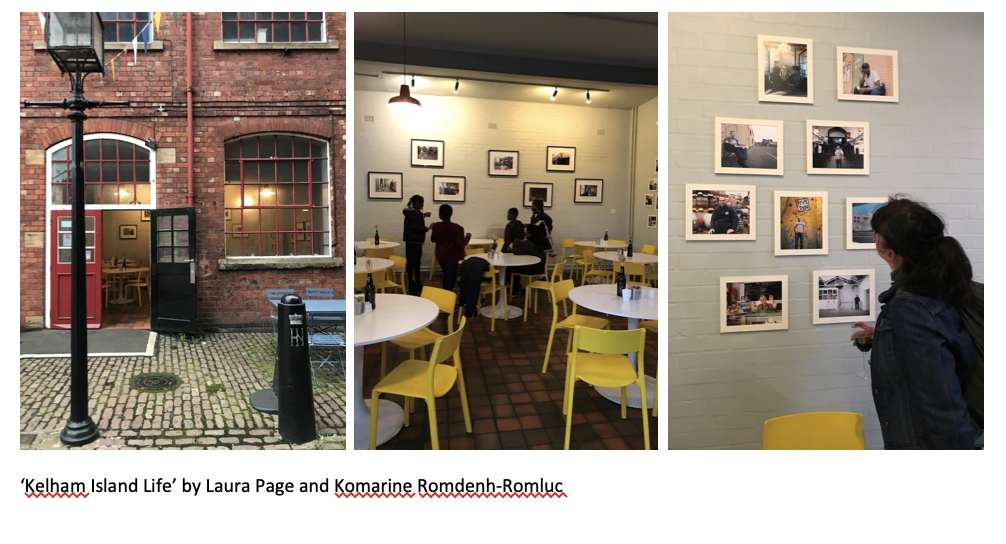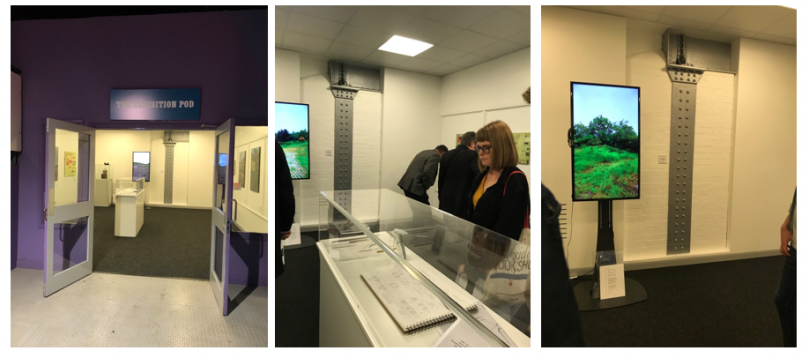Review and photographs by Anna Netri
This text was written in response to an exhibition of works by Louise Finney, Nick Grindrod, Laura Page, Sean Williams, Jonathan Orlek and Goran Vodicka at Kelham Island Museum (June-August 2019).
This exhibition is part of a series of cultural events in Kelham Island that explores the contribution of heritage and creativity in urban identity. A key area of discussion concerns the role of artists and maker communities in transforming a neglected industrial area into an award winning neighbourhood.
It is proven that the character of architecture influences our lives, as does urban planning at a bigger scale. This exhibition examines the role of urbanism, exploring how inhabitants interact with the built and unbuilt environments. This leads to an exploration of how we perceive the spaces we live in and the way we acknowledge them.
Our awareness of place is certainly individual and selective, but also creative. Through creativity, we constructively participate in the making of place. The exhibition explores this process and reconstructs our awareness through the narratives of the artists’ perceptions, the heritage of the Kelham Island Museum, the neighbourhood and its inhabitants . The environment that shapes our lives is made visible or imaginable.
The first part of this tripartite exhibition is hosted in an enclosed room, suggestive perhaps of a more abstract or inner perception. Two different types of awareness of our surroundings and relationships with time can be recognized in the works by artists Nick Grindrod and Sean Williams. Grindrod ‘controls’ space, shaping and exploring it, with a subjective perception of time, which is continuous or timeless; while Williams ‘controls’ time, freezing it and immobilising the light. Each second ticks by and is captured through this subjective perception of the space, which is also reality.

Some of the tools of urbanism can be associated with Grindrod’s artworks. Lines and shapes are used like streets and buildings to create places. However , the way the colours are applied in ‘From Every Angle’, reminiscent of spaces of congregation and flow, seems to suggest that spaces are determined only by the human use of them, without real physical constraints. The notion that streets and buildings are not the only main elements that shape the framework of a city emerges in another artwork, where dark stripes are like traces of human presence and consequently marks on the landscapes. ‘Non-Digital Memories’ seems to recall how scales, proportions and compositions, along with memories, have a significant role in the design of the urban spaces.
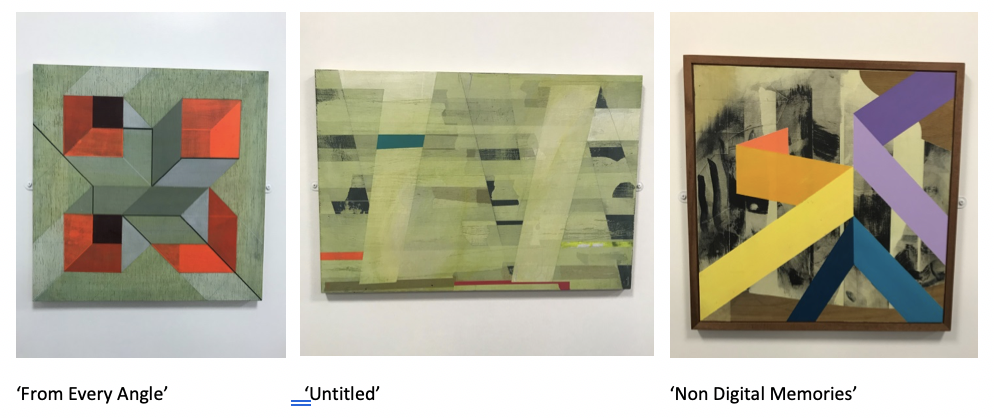
Sean Williams’ artwork speaks beautifully to what is evident and what impacts on our environment, and how we barely see it. Whilst site works and temporary installations significantly modify landscapes, we often don’t acknowledge that, or how it impacts on our lives. Williams captures these modifications, freezes time and returns to us what our senses unconsciously capture. The artist’s crystallisation of a certain type of light and his use of detail with colour open a reflection on what the abilities and opportunities are to make the spaces we live in beautiful.
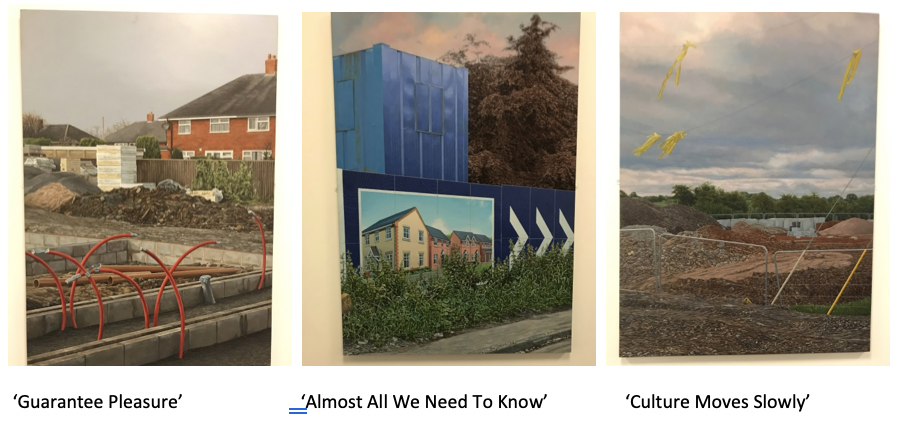
A video installation by Jon Orlek and Goran Vodicka, positioned at the far end of the room as a focal point of perspective, resembles a door frame to the Parkwood Springs area. A dialogue between two observers while they cross this landscape between the landfill site and Kelham Island, it’s more like an open conversation giving voice to various individuals and various spatial imaginaries and realities. There is the perception of the architects, who have ideas just by seeing marks on the landscape, and the perception of the passers-by or users. This video is like an extension between an individual and the built environment, the community and the landscape transformed by both, the nature and the users.
In this exhibition, the way the works have been selected and set amidst the collections of Kelham Island Museum, itself a heritage building, generates recognition and narrative. Louise Finney’s collection of drawings is installed in the ground-floor display area, alongside some industrial machines and next to the River Don Steam Engine. At first sight these technical drawings, with all their attention to the details of mechanical components, seem to recall the inventiveness of the designers of industrial machines or of the architects who create the spaces we live in. But the handwritten notes on the drawings further reveal further detail – of the memories, stories, and associations within Kelham Island’s surrounds and those of the residents and passers-by. Finney’s work creates bridges between the present and the past (or memories); between the individual and the community.
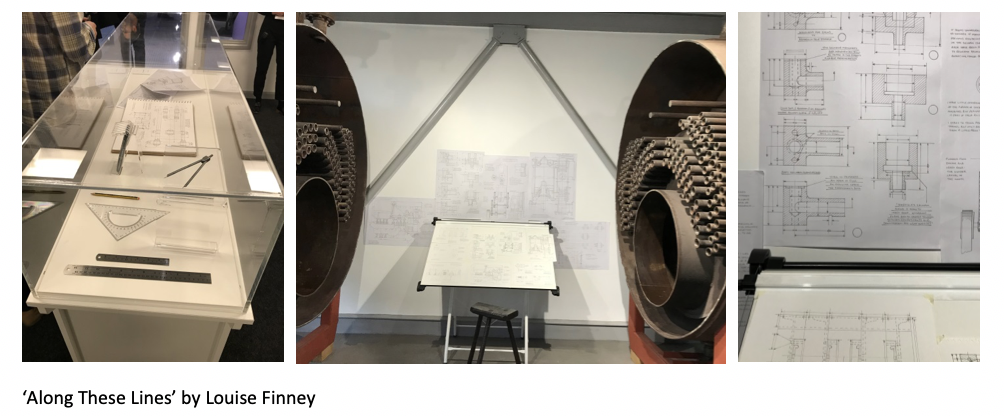
By walking out of the main museum’s building and entering the café area, you will reach the third display. An exhibition of photos emerging from Laura Page’s collaboration with Dr Komarine Romdenh-Romluc (a philosopher from the University of Sheffield) reveals how the architecture and heritage of Kelham Island have subconsciously inspired people’s lives and how they belong to this place. Each photo captures the individual and his/her contemporaneity and their relationship with the surrounds.
Page’s work shows that it was not just the convenience of cheap rents that attracted people to open their businesses in Kelham Island. The character of the architecture, the freedom of an open plan warehouse, the sense of interconnection with the atmosphere and past identity of this former industrial area in Sheffield, together inspired the new occupiers and enabled their creativity.
